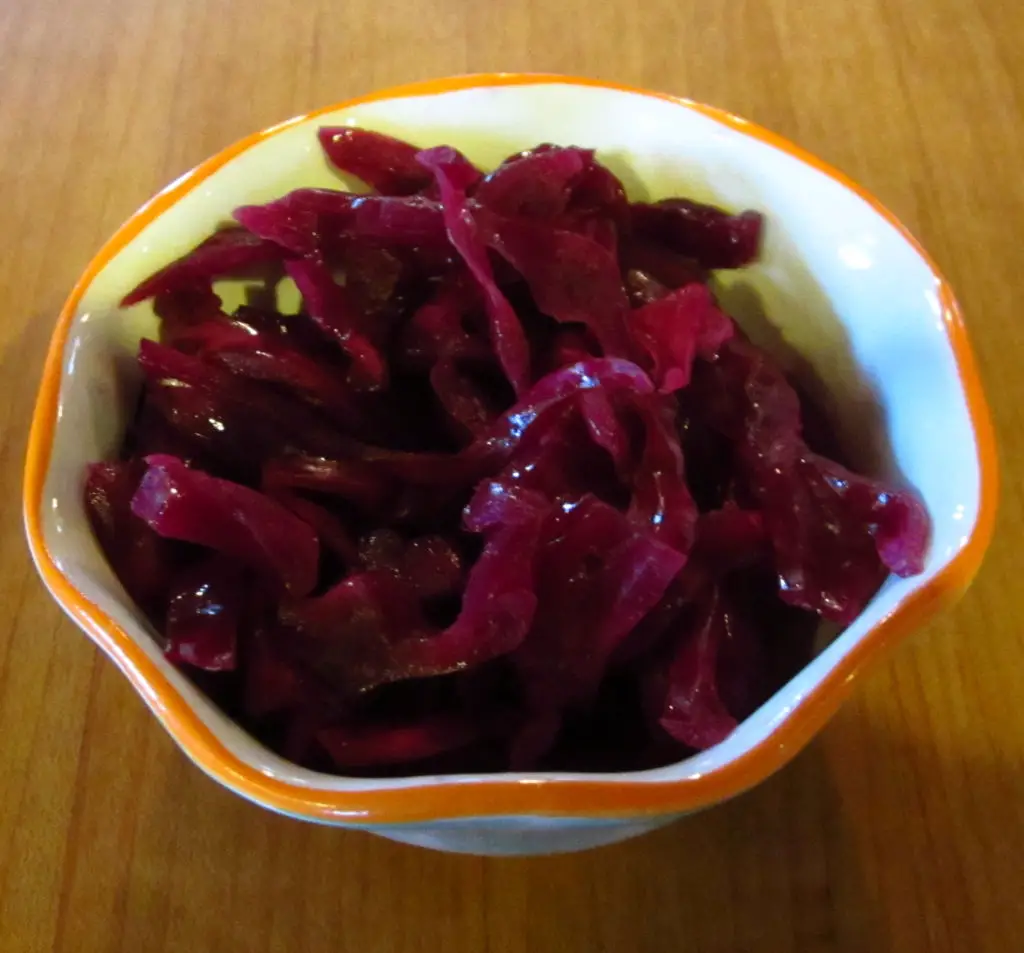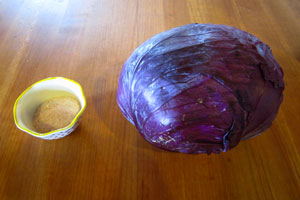
Sauerkraut is a great first time ferment. It is easy to make it is a nutritious probiotic food which is full of flavor. In its basic form it is just cabbage cut up and fermented with salt but it has an infinite number of variations.
Once you have tried this basic sauerkraut recipe try adding additional flavors to a batch. You could make a traditional caraway seed kraut or add hot peppers for a spicy version. Be creative and don’t worry about not liking the result as it’s all part of the fun.
Sauerkraut has a long history of providing nutrition. It was used by sea captains to prevent scurvy, provide flavor to bland dishes in colder climates and today is known as a great source of probiotics.
Equipment:
- A non-porous fermentation container with an air tight lid. A mason jar with a sealer lid or a plastic lid is a good option but any non-porous container will do fine.
- A kitchen knife.
- Some type of pounder
- Some type of weight which fits into the mouth of the jar
Ingredients:

- One head of cabbage ( any color or type )
- Salt
Instructions:
- Cut the cabbage into strips.
- Liberally salt the cabbage strips and work the salt into the cabbage.
- Place a layer of cabbage into the fermentation container and pound it to release some of the juices in the cabbage.
- Continue until container is full.
- Weight the cabbage down with the weight to ensure it stays under the juices.
- Put the lid on the container and place it in a cool place in the house.
- Wait
After five days or so you can begin to check how your sauerkraut is fermenting. Take the lid off and smell it. You can also remove the weight and taste some of the sauerkraut under the juices. If it is to your liking put it in the refrigerator.
If the cabbage is under the juice it will keep up to a year or so. Captain Cook took barrels of sauerkraut on his voyages and even after two years the crew was eating it to prevent scurvy (vitamin C deficiency) and he didn’t have refrigerators. The lactic acid and the active probiotics will keep your sauerkraut good for a long time if it remains cool.
Note:
I use swing top jars which have a rubber seal. These are great because they let out pressure which builds up inside the jar once it gets high enough but doesn’t let any air back in.
This way I don’t have to use any weights just press the cabbage into the jar so that the juice salt mixture covers the cabbage, then daily turn the jar upside down to move the juices around. This prevents any spoilage bacteria from growing while the cabbage sours. Once the cabbage starts to sour the spoilage bacteria cannot grow.
Although sauerkraut is a simple ferment it has a wide variety of methods, recipes, and traditions. If you want more inspiration try reading “Making Sauerkraut and pickled vegetables at home” which is a great book filled with recipes and new methods to try.

